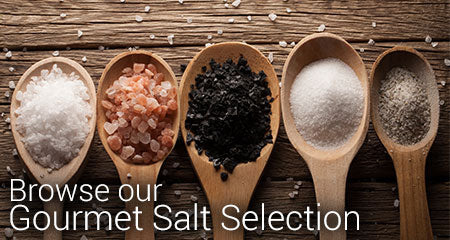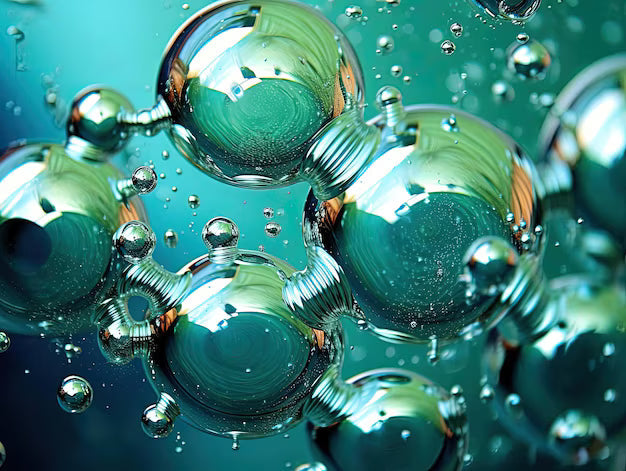Your Immune System on EVOO = Incredible Hulk - Blog #7

Hello Everyone! Welcome back to another Friday blog. This week we are taking a look at what EVOO can do to boost your immune system’s response to invading microbes (viruses and bacteria), and other foreign invaders (like parasites, dust, pollens, etc.) our bodies have to deal with. This is such an important subject right now with the Covid-19 pandemic in our faces every day. First, lets take a moment to address last week’s questions and comments.
I’ve had several comments concerning the difficulty of drinking EVOO. If you are one of these people, understand that the GOAL is to get the raw EVOO into your body. You can add to any food, oatmeal, smoothie, salad, drizzle over hummus, avocado, dip your bread... You can put a tablespoon here and there in anything throughout the day to get amount you are aiming for. I’m getting more and more excited to share my own personal journey with you all!! However, I want to continue to lay the foundation regarding each system in the body. Trust me, it will come full circle!!!
Where would we be without our immune system? Short answer is we wouldn’t be alive. Several lines of defense are in place to protect us. Remember when we talked about the brain having a defense called the BBB (blood-brain barrier)? It helps protect our brain by keeping pathogens out, separating the neuroimmune system from the peripheral immune system. Our immune system consists of an entire army of soldiers ready to take out any foreign invader that could potentially harm us. “To function properly, an immune system must detect a wide variety of agents, known as pathogens, from viruses to parasitic worms, and distinguish them from the organism’s own healthy tissue.” (Wikipedia) When we are born, our ‘army’ is just starting to build up. The more our body is exposed to the more comprehensive our army grows, allowing it to recognize things it has seen before. This is immunological memory. Immune cells are produced in the bone marrow, then stored in various places in the body, including lymph nodes, thymus, spleen and other lymphoid tissues. They circulate between organs and lymph nodes on the lookout for invaders. There are 2 subsets of our immune system: innate and adaptive.
The Innate immune system - this is our first line of defense and doesn’t adapt or change during one’s lifespan and is composed of our natural killer cells. It is responsible for 1. Recruiting immune cells to sites of infection by producing chemical factors and mediators (cytokines) 2. Activation of the complement cascade which enhances antibodies and phagocytic cells (cells that ‘eat’ or engulf) to get rid of microbes and dead or damaged cells, promote inflammation and attack the cell membrane of pathogens. 3. Identifies and removes foreign substances in organs, blood and lymph by white blood cells. 4. Activates the adaptive immune system through antigen presentation 5. Acts as both a chemical and physical barrier to pathogens released following an injury or contusion that breaks through the first line of defense. The innate immune system is very much involved with inflammation.
The Adaptive immune system (acquired) - These are specialized, systemic cells that create an immunological ‘memory’ after initial response to a specific pathogen. This system develops throughout life and involves T and B lymphocytes. T lymphocytes are the major players in the adaptive immune system. This leads to a rapid and enhanced response when subsequent encounters with that pathogen occur. This part of immunity is the basis for vaccines.
Both subsets use humoral immunity, involves B-cells (macromolecules found in extracellular fluids) and cell-mediated immunity, involves T-cells (response that doesn’t involve antibodies) to perform their jobs. Humoral immunity uses macromolecules found in extracellular (outside the cell) fluids, such as secreted antibodies, antimicrobial peptides and complement proteins. In vitro, SFA (saturated fatty acids) can suppress B-cell activation, but the presence of OA prevents this effect! Cell-mediated immunity activates phagocytes, cytotoxic T-lymphocytes (killer T) and release of cytokines in response to antigen (molecule or molecular structure on surface of pathogen). An example is the common cold virus, which causes the body to make antibodies to prevent us from getting sick. If a pathogen somehow escapes the humoral immune response and begins entering and infecting cells, cell-mediated response is initiated. These killer T cells are stimulated to destroy infected cells. Antigens carry many epitopes (specific binding sites) that antibodies are designed to ‘fit’ onto like a lock and key. Antibodies can actually bind to identical isotopes on 2 different cells at the same time. This can cause neighboring cells to aggregate (group together). Wow! Very efficient. Who knew? Our immune systems are the ultimate multitaskers.
Cells that engulf antigens and present fragments to T cells are known as antigen presenting cells. There are 3 known types, including 1. Macrophages 2. Dendritic cells 3. B-cells. Macrophages are ‘asleep’ until stimulated to become active. They are found in almost all lymph tissue and must ingest any foreign material they come in contact with. Dendritic cells have long processes (arms) that trap antigens and present them to T cells and B-cells. B-cells express (Ig) immunoglobulin molecules (antibodies) on their surface. Each B-cell can only bind with 1 antigen, making them very efficient antigen presenting cells. Descendants of B-cells produce antibodies.
There are 5 main classes of Immunoglobulins:
IgG - these are the most common found in blood and tissue fluids, capable of crossing the placenta to provide a degree of immunity to the fetus. Also found in mother’s milk, once ingested can be transported into blood to confer immunity.
IgM- first to be made by maturing B-Cells. When secreted, 5 of their Y-shaped units form a large molecule with 10 antigen-binding sites making them very effective at attaching to antigens markers on the surface of bacteria causing microorganisms to aggregate. Wow! So this is how our bodies get rid of bacteria so effectively. Put all the bad guys in a room and surround them with your army.
IgA - main class found in body secretions such as tears, saliva, colostrum (first produced in lactating mothers), respiratory and intestinal. They can cross epithelial cells lining organs and ducts. They are synthesized daily and are less stable than IgG, so present in lower amounts.
IgD - present on the surface of developing B-cells. Their role is unclear, but it is speculated they play a role in determining whether antigens activate B-cells
IgE - Ever wonder why your ‘allergies’ are acting up? This is due to over-expression of (IgE) Immunoglobulin E in response to an antigen such as cat dander or pollens. This leads to a release of chemicals (such as histamine) that give us all those nasty symptoms in the nose, eyes, throat, skin, etc. Each type of IgE has a specific radar fo each type of allergen. Some people only have the IgE specific for cat dander, so they are only ‘allergic’ to cat dander. They also help protect against parasitic infections.
Whew! I’m not going to lie. There’s a LOT going on here. So, what happens when things go wrong? Autoimmunity is the failure to recognize the good cells as ‘self’ and our immune system begins to attack normal tissue. So, how can this happen? Let’s take a look at cytokines. These are chemical messengers whose job is to tell immune cells what to do and also tell the body to produce more in order to rapidly deliver a powerful blow to the infection. However, in severe cases of flu, a resulting cytokine storm occurs resulting in an immune response that can cause damage to lungs, kidneys and other organs. Scientists feel cytokine storms are the reason normally healthy young people die of the flu. It results in several autoimmune diseases we have touched on previously, such as systemic lupus erythematosis (SLE), MS, rheumatoid arthritis, Graves’ disease, Hashimoto’s thyroiditis, psoriasis and many others.
Okay. So we have a very complex immune system. It has a huge job. We should do all we can to help it be as efficient as possible, right? Multiple studies demonstrate how our immune system is affected by our nutritional status. Dietary fats have been studied to assess their effects on immune system modulation (Controlling influence by enhancing or suppressing). They looked at the low incidence of autoimmune diseases in Greenland Eskimos, who consume high quantities of fish oil (FEMS Immunology and Medical Microbiology 29 (2000) 323-328). They were able to demonstrate that dietary fish oil modulated several immune system functions. This spurred further studies looking at MUFAs (monounsaturated Fatty Acids), PUFAs (polyunsaturated Fatty Acids, and SFAs (saturated Fatty Acids) to determine their roles in immune modulation. They found that dietary fats participate actively in modulating immune function, and that PUFAs, generally tend to be more immunosuppressive, interfering with killer T activity, antibody production, lymphocyte proliferation, cytokines synthesis and membrane surface molecules synthesis. Furthermore, immunosuppression occurred at detriment to the host succumbing to infection.
It has been demonstrated that EVOO has bactericidal (kills bacteria) activity against multiple organisms. A study in 2011 looked at how different FFAs (free fatty acids) react in the presence of MRSA (methicillin resistant Staphylococcus Aureus). This is the scary form of staph that is resistant to antibiotics that many get while they are in hospital or have taken antibiotics inappropriately. It is becoming rampant in our society. Their study showed that only Oleic acid can effectively eliminate MRSA through cell wall disruption, causing the bacteria to break apart and die. WOW!!! This happened in both hospital and community-associated MRSA (NIH). Now, we all know that antibiotics have awful side effects, including wiping out your good intestinal flora along with the bad causing havoc to our digestive system, leading to antibiotic resistance and other systemic side effects in the body. This can be particularly more serious in children. Since OA is naturally present in tears and skin lipids, and OA is known as an antibacterial agent, scientists wanted to study how OA may be used to treat bacterial eye infections, which are routinely treated with topical antibiotics. A study in 2014 showed that OA inhibited growth of both gram negative and gram positive bacteria in a concentration-dependent manner. OA inhibited all growth at a concentration of 1%. Their conclusion is that OA can be used to to prevent growth of various pathogenic ocular bacteria, thus reducing antibiotic usage.
When we look at flu and other viruses, it is of note that OA inactivates enveloped viruses, such as Influenza, H1N1, Corona viruses, Herpes, Sendai, Sindbis within minutes of contact. However, it does not have the same action on non-enveloped or naked viruses such as polio. Since OA has such profound action on membrane fluidity, this is not surprising! These viruses change their configuration to attain their lowest energy state and expose their attachment protein. You can think of a long arm reaching out to approximate a human cell with the evil intent of infection. This arm literally pulls the cell in close to the virus, creating a pore through which it can enter the cell. Hydroxytyrosine (HT), a powerful antioxidant in EVOO, appears to disable or inactivate the viral protein (‘arm’) in such a way it prevents fusion (attachment). If the virus can’t attach to cells, it can’t infect and replicate. OA is then able to obliterate the envelope. What?!!! OA kills enveloped viruses and HT essentially disables them! #EVOO
The typical influenza virus kills .1 of 1% infected each year. Most people don’t even worry about it. We look at it as rather innocuous and only affects real sick people. The word ‘Influenza’ is Italian and came from the phrase “Influenza di freddo” meaning influence of the cold. However, certain more powerful versions of these viruses emerge that cause more widespread infections and deaths. The Russian flu pandemic of 1889 spread along the roads and railways by human to human contact. When it arrived in the U.S. in December 1889, symptoms were very much like a bad cold. By January 1890, New York had reported a new ‘wintertime’ death record of 1,202. The total U.S. deaths were just under 13,000 (worldwide about 1 million). Many viral researchers today speculate that this could have been a Coronavirus, rather than Influenza. It returned several times in subsequent years, but U.S. population had developed immunity by then.
According to the CDC, the 1918 Influenza pandemic killed an estimated 500 million people, roughly 1/3 of the world population. So many died that the average lifespan in the U.S. dropped by 12 years, from 51 to 39!! Scientists now know that this was a H1N1 virus with genes of avian (bird) origin. “If such a plague came today, killing a similar fraction of the U.S. population, 1.5 million Americans would die, which is more than the number felled in a single year by heart disease, cancers, strokes, chronic pulmonary disease, AIDS, and Alzheimer’s disease combined” (Flu, Gina Kolata;2001). Now, 19 years later, these numbers would be much higher! In 2009 there was another pandemic, H1N1 (Swine flu). It originated in the U.S. and spread throughout the world. “The CDC estimated that from April 12, 2009 to April 10, 2010 there were 60.8 million H1N1 cases, with 274,304 hospitalizations and 12,469 deaths in the U.S. alone.” Estimated worldwide deaths were upwards of 500,000 in the first year, with about 80% occurring in people under 65. The H1N1 virus in 2009 is a subset of Influenza A, and is related to the 1918 flu. Are you beginning to see the big picture here? These viruses have avian and animal origins, yet people are getting sick and dying.

“The next big human pandemic - bigger than AIDS or the 1918 influenza - is likely to be caused by a zoonotic virus, one that jumps from a wild animal to infect a human host” (David Quammen, Spillover: Animal infections and the next human pandemic;2012). In an interview, David Quammen explains why he wrote a book on hideous emerging diseases. “They emerge from other species,” bats, rodents, monkeys and chimpanzees... He’s talking about Ebola, SARS, AIDS, Lyme disease, West Nile, Marburg, killer influenza, certain form of malaria and many more. He explains this is not a new problem, but old. We have invaded their territory, cutting down forests, killing and eating fruit bats, rodents and monkeys that are natural hosts for these viruses. Several scientist are like-minded and have been predicting new pandemics for several years. And...here we are. On a personal note, this book is a must read!
Let’s talk about Coronaviruses. They are zoonotic, meaning they can spread from animals to humans. In 2002 when SARS-CoV first emerged from China as an unusual pneumonia, spreading across 29 countries infecting over 8000 and killing 800. MERS-CoV epidemic appeared in Saudi Arabia in 2012 with similar symptoms but killing at 34%! Now, understand the common cold is a coronavirus. There are many. The new Covid-19 is known as SARS-CoV-2, emerging from China in 2019. Most scientists doing research on these viruses feel that the common cold may have started out quite deadly, but over time and with widespread exposure has lost lethal power. Many feel this new corona virus will eventually be the same, but we don’t know enough about this new strain of virus yet. Since EVOO kills and disables enveloped viruses, it only makes sense to protect ourselves as much as we can!
Whew!! So much to take in. As you all know by now, I am a physical therapist. I have continued to treat patients during this whole ordeal. I’ve experienced patients with active flu cough in my face while I’m taking their blood pressure. I was worried because I didn’t get a flu shot this year and was about to go on a very important trip with my husband. I’m also getting close to the AT RISK age. I thought, great. Just in time for my trip. But, nothing happened. I never even got a sniffle. (Normally, I’ll catch a cold at least). I just HAD to research to find out why. Now, I know. I will never leave home without having had my EVOO to protect me.
So, my friends, until next week...drink (ingest) your EVOO, eat some fatty fish, get plenty of water and sleep, exercise your body and mind!! Next week I’ll be discussing how EVOO affects pain in your body. #EVOO
This blog is intended for informational purposes only. Discuss strategies with your Healthcare Practitioner.






